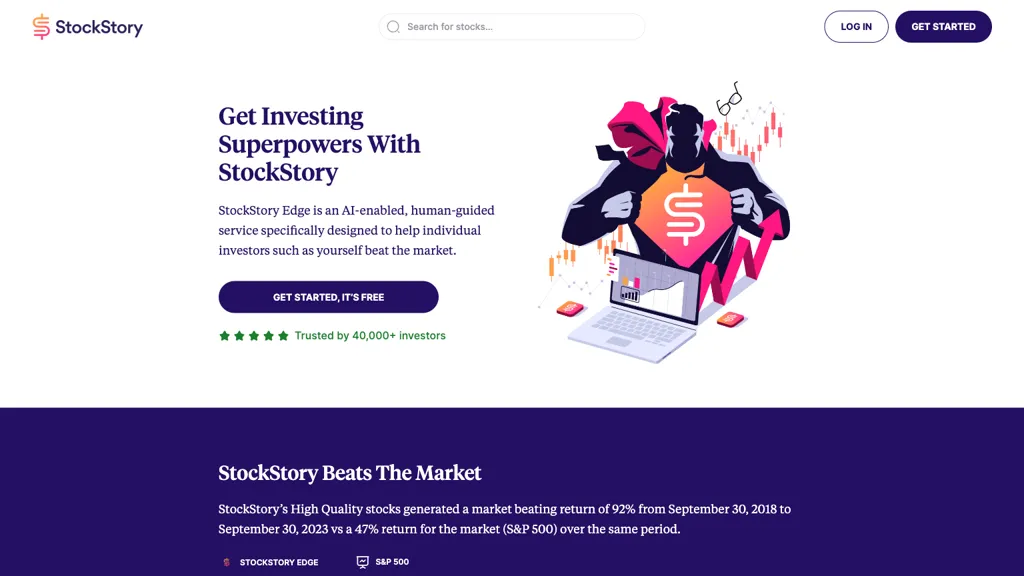20 Handy Ideas For Choosing AI Stock Analysis Websites
Top 10 Tips For Evaluating Security And The Privacy Of Ai Trading PlatformsPrivacy and security are the top priorities when making use of AI stock predicting/analyzing trading platforms because they typically handle sensitive financial as well as personal data. In the event of a data breach or misuse, it could lead to financial and reputational losses. Here are the top 10 tips to assess the security and security of these platforms:
1. Evaluate the encryption of data
Secure transmission of data: Make sure whether the application you're using has secure protocols that encrypt your data as it's transferred between their servers and the device (e.g. TLS/SSL).
Security in the rest: Verify that sensitive information stored on platforms servers are secured with high-quality encryption standards.
End-to-end encrypted communication: Make sure that the platform you're using has encryption that works end-to-end for any sensitive data.
2. Examine Authentication Mechanics
Two-factor authentication (also called copyright) is an excellent method to improve security.
Find out about biometric authentication options for mobile applications (e.g. facial recognition, fingerprint).
Password policy: Verify if the platform enforces strict policies regarding passwords (e.g. minimum length or requirements for complexity).
3. Check for regulatory compliance
Financial regulations: Ensure that your platform is in compliance with all relevant financial laws (e.g. SEC FINRA MiFID II).
Data protection law: If you conduct business with the region subject to these laws, make sure you are in your compliance.
Audit certifications. Make sure that the system you're looking at has been through third-party assessments of security or certifications.
Review Controls for Access to Data
Role Based Access: Verify that the platform is using role-based access controls (RBAC) that limit access to data only to those who are authorized.
Permission levels: Look to determine if different members or users of the team can have different permissions.
Activity monitoring: Verify that the platform tracks and monitors all user activities for any suspicious behavior.
5. Assess the vulnerability of your organization.
Regular updates Make sure to update the software frequently to ensure it's always current.
Verify that your platform is regularly screened to penetration tests in order to identify security vulnerabilities and correct the vulnerabilities.
Bug bounty programs: Check if your platform has a program that rewards external security experts who report weaknesses.
6. Evaluate Data Privacy Policies
Transparency Check out the privacy policy to see the ways in which your personal data is collected, used, or shared.
Data minimization is the process of ensuring that only data necessary for operation are gathered by a platform.
Third-party sharing : Review the platform's data sharing policies and conditions.
7. Secure API use is essential to monitor
API security: Ensure that the platform's API is secured with authentication methods, such as OAuth and API keys, to encrypt data exchanges.
Limiting rate. Verify the API's rate limiter to prevent misuse.
Look for access logs. The platform should log API usage and access to audit and monitor.
8. Assess the Recovery of Incidents and Response
Incident response plan: Ensure that the platform has a clear plan for responding to incidents such as data breaches or security incidents.
Examine the platform's policies on notification to determine if it informs its users promptly when there's an attack on security.
Data backups - Check that the platform has a plan in place for disaster recovery, and that it regularly backs the data up.
9. Review the security measures for physical security
Data center Security: Make sure that servers are hosted in secured data centers that have physical security measures in place (e.g., monitoring, access controls).
Redundancy Verify the redundant systems of the platform in order to ensure that data is available in the event of any component fails.
Verify the geographical distribution of the data to ensure that it is resilient.
10. Test privacy protections for users
Data deletion: Ensure that the platform allows you to delete all your personal data when you decide to stop using it.
Privacy settings: Check if there are privacy settings that let you control the data shared and made public.
Verify if an anonymization is applied to the data used for analytics or machine learning.
Bonus Tips
User reviews and feedback: Use reviews and feedback to judge the reputation of a website in terms of security and privacy.
Trial period for free: Try the platform's privacy controls and security features by using the demo.
Customer Support: Ensure that the platform provides solid assistance for any problems or issues related to security.
These tips will assist you in evaluating the privacy and security aspects of AI platform for predicting and analyzing stocks. This will ensure that your financial and personal information is secure. A safe platform not only safeguards assets, it also builds confidence in their services. Check out the recommended stock ai info for blog tips including ai investing app, stock ai, chart ai trading assistant, ai trading, investment ai, AI stocks, AI stock picker, ai investment app, ai for trading, ai investing platform and more.

Top 10 Suggestions For Evaluating The Accuracy And Scalability Of Ai-Based Stock Trading Platforms
To ensure that AI-driven stock trading and prediction platforms are scalable, they must be able to cope with the ever-growing volume of data and complexity in markets, as well as customer demands. These are the top 10 tips to assess scalability.
1. Evaluate Data Handling Capacity
Tips: Ensure that the platform you're looking at can handle and process large amounts of data.
Why? Scalable platforms have to manage increasing volumes of data without performance degradation.
2. Test the capabilities of Real-Time Processing
Try the platform out to see how it handles streams of data in real time like breaking news or stock price updates.
What's the reason? The analysis in real-time of trading decisions is crucial, as delays can lead to you missing out on opportunities.
3. Check Cloud Infrastructure for Elasticity
Tip. Determine whether the platform uses cloud-based infrastructure such as AWS, Google Cloud and Azure which are able to scale resources on demand.
Cloud-based platforms are a great way to gain elasticity. They allow the system to scale down according to the need.
4. Algorithm Efficiency
Tip: Assess the computational efficacy (e.g. deep-learning and reinforcement-learning) of the AI models used for prediction.
The reason is that complex algorithms may require a lot of resources. Optimizing them so that they make them scalable is important.
5. Explore Parallel Processing and distributed computing
Verify if your platform supports parallel processing or distributed computing (e.g. Apache Spark, Hadoop).
The reason: These advanced technologies allow for faster analysis of data and processing on multiple nodes.
Review API Integration and Interoperability
Tips Check the platform's capability to connect with APIs from outside (e.g., market data providers, brokerage APIs).
What's the reason? Seamless integration guarantees the platform can adapt to new information sources and environments for trading.
7. Analyze User Load Handling
Tip: Simulate the impact of high user traffic to test how the platform does under high load.
The reason: Performance of a platform that is scalable shouldn't be affected by the growth of users.
8. Examine the model of Retraining and its Adaptability
Tips: Check how often and effectively the AI models are retrained with new data.
The reason is that models must continuously adapt to the changing market to ensure that they remain precise.
9. Check for Fault tolerance and redundancy
Tip - Make sure that your system has failover and redundancy features for handling hardware or other software malfunctions.
Reason: Trading can be expensive, so the ability to handle faults and scale are essential.
10. Monitor Cost Efficiency
Analyze your platform's cost, including the cloud resources, storage and computation power.
What is the reason: The expense of scalability should not be unsustainable. Thus, it's essential to balance performance and cost.
Bonus Tip - Future-Proofing
Make sure the platform is built to take advantage of new technologies (e.g. quantum computing or advanced NLP) and be able to adjust to regulatory changes.
By focusing your attention on these factors, you can accurately assess the capacity of AI prediction as well as trading platforms. This ensures that they are durable and efficient as well as ready for further growth. Check out the most popular free AI stock picker info for more examples including stocks ai, ai copyright signals, free ai tool for stock market india, free ai tool for stock market india, stock predictor, best ai for stock trading, free AI stock picker, free ai tool for stock market india, ai investment tools, best stock prediction website and more.
